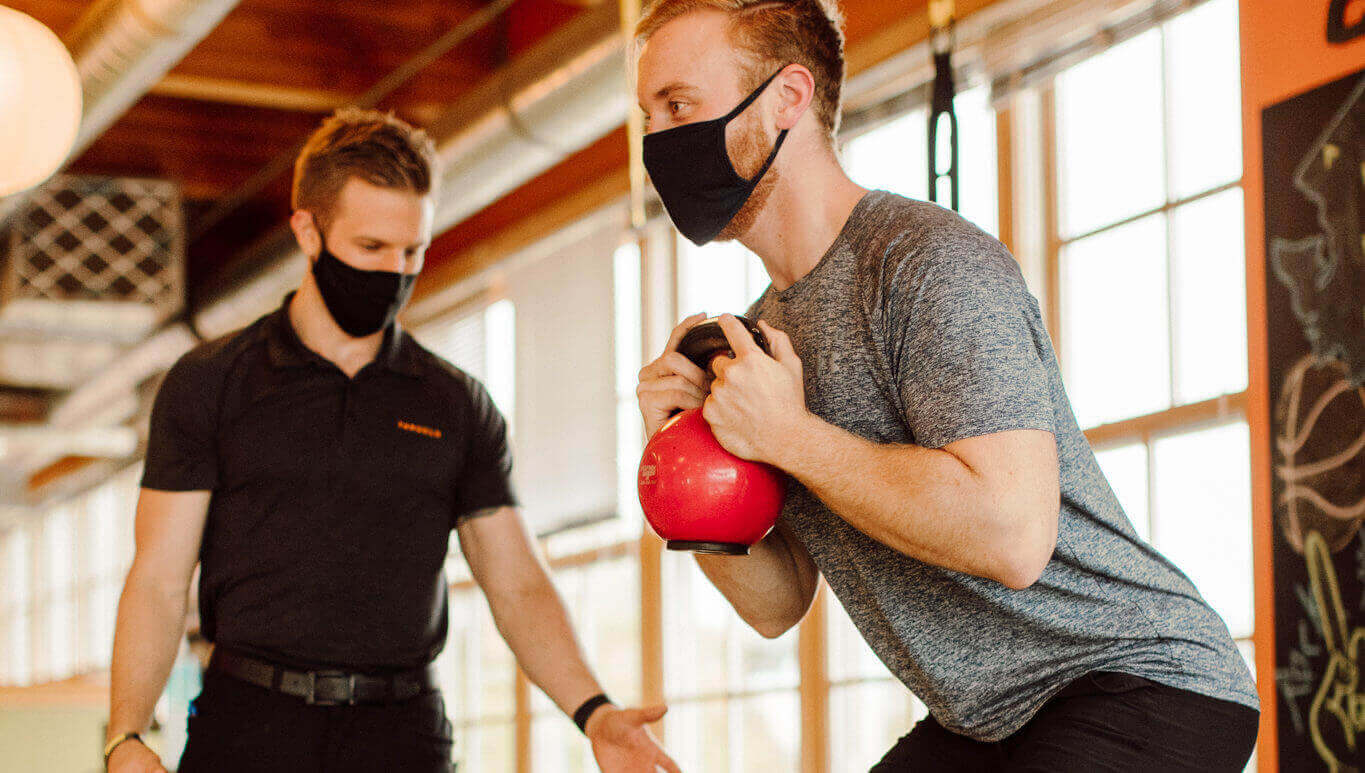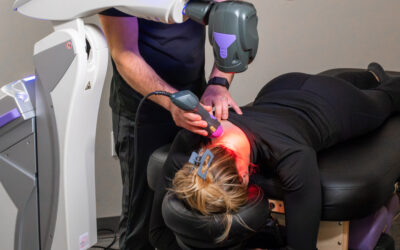 You know the saying, “you have to crawl before you can power walk.” I think that’s the correct saying? From the moment we are born, we have to earn the right to progress in our movement milestones.
You know the saying, “you have to crawl before you can power walk.” I think that’s the correct saying? From the moment we are born, we have to earn the right to progress in our movement milestones.
Benchmarks like controlling eye movement in a matter of weeks, strength to roll ourselves over within months, and developing the essential balance, strength, and coordination to take our first steps around a year. It all has to be earned, and like everything worth achieving in life, there are no shortcuts to success.
In construction, the deeper the foundation, the bigger and more resilient the building can become.
Your body deserves the same approach because with each calorie burned and each splat point earned, you are building a better version of yourself.
Did you know that it takes the same amount of energy to choose to sign up for class as it does to talk yourself out of it?
Energy is expended either way and you are choosing to invest your energy into something that has the ultimate return – – your health.
That being said, without a strong foundation, you could be leaving yourself open to injury, which can result in classes missed and momentum lost.
That’s not going to be your reality this year because you know simple principles of movement, such as how proper hinging protects your back, proper squatting protects your knees, and moving your shoulders correctly results in less soreness and more tone and definition.
Are you ready to control your movement so you can own each workout?
Are you ready for your best year of fitness?
I am on your team and here to help, so let’s do this!
Ready, set…. go!
Below you will learn tips to help you feel more physically competent and emotionally confident while performing the four fundamental movements.
These movements are not just relevant to the studio.
They are also applicable to all the other activities we love to do, such as playing with our kids, going for a hike, or anything else that gets our heart rate up and drives our stress levels down.
1. Squats
There should be no surprise here – the squat is a staple movement. From the weight room to the treads and even the rowers, the ankles, knees, and hips need to work in harmony to ensure the load is directed into the powerful glutes and not your knees.
Your glutes are the biggest muscles in the body, which means they are meant to do a lot of work.
Not only do strong glutes help us during the workout but they also give us more confidence in our jeans, am I right? However, even though squatting is such a natural movement, it can easily feel foreign. Why is that?
While there can be many answers to this question, the simplest and most widely accepted explanation is the fact that the body doesn’t have adequate strength to support proper body position at the bottom of the movement.
Most patients and members I have worked with feel pretty good initiating the movement on the way down. However, towards the bottom of the movement, they start to feel off-balance and begin to transfer their center of gravity to where they feel strongest.
This compensation could be shooting the knees forward and/or inward or rounding the spine, exposing the lower back. These described dysfunctional movement patterns are almost always correctable as long as we take time to get stronger at our weakest point.
Remember the point I made at the beginning – infants and toddlers have to earn the right to move from the ground up. If we don’t feel confident at the bottom of the squat, how can we ever expect to use the right muscles on the way up?
Additionally, if we can’t train our ankles, knees, and glutes to move together, how can we ever expect to perform our best on the treads and the rowers.
Squat Tip: The Contract – Relax Squat
10 reps x 10 second glute engagement at the bottom
• Set up in a squat stance that is comfortable for you
• Make sure your knees move over the middle of your foot on the way down
• Use a TRX or place hands out in front of you for balance
• Pause just shy of your normal stopping point
• Engage your glutes as hard as you can for 10 seconds (make a fist, tense your core and breathe)
• Raise up
• Repeat 10 times trying to go just a quarter to half inch lower each rep with good form
You should feel exhausted at the end of just one set. You should also feel that you are able to descend down a little lower into the squat while having control of your glutes through the full range of motion. When you can feel your glutes working “in the hole” of the squat, you can be confident that you are loading the spring to drive you back to the top with power and efficiency.
2. Deadlift
We were meant to be able to pick things up off the floor without risking injury in our back. There should be no surprise that there is a stigma surrounding the deadlift exercise. Why is that? Well, it’s because it is the only exercise with the word “dead” in it. It could also be that we tend to associate this exercise with pain around our lower back.
However, the deadlift can be one of the safest compound exercises we can ever perform because of the simple fact that we were built to perform it. We were designed to see an object on the ground that needs to move, and then proceed to safely move it by shifting our weight, backloading our glutes and hamstrings, and preserving the integrity of our spine.
The deadlift is also a prerequisite to rowing and requires the ability to hinge from the hips for the sake of optimal joint alignment and power output. Do you want to hit a wattage personal record this year and not deal with lower back soreness the next morning? It’s time to work on your movement foundation. It’s time to make a door… and hinge.
Deadlift Tip: Hip Hinge with Dowel
20 reps x 5-second glute engagement at the bottom
• Set up with your feet under your hips pointed straight forward
• Place a dowel, golf club, or broomstick behind your back
• Make three points of contract: tailbone, mid-back, and back of your head
• With soft knees, push hips back away from your heels
• With a neutral spine, keep pushing hips back and allow the chest to come down towards the floor
• Push back until you feel the tension in your hamstrings
• Once you feel the hamstring stretch, hold that for 3-5 seconds while engaging your glutes
• Come back up, then repeat
• Try to achieve a little more range of motion with each rep. Squeeze the glutes at the bottom of each movement.
• When you feel confident, perform without the dowel.
3. Push-Up
I once heard that Chuck Norris doesn’t do a push-up but rather, he pushes the world down. There’s a little fun fact for ya. Unfortunately, the rest of us have to feel confident pushing our bodies up, not just for the sake of a strict push-up but also to get the most out of more advanced exercises like full burpees. Remember Hell Week, anyone?
In addition to building general strength and endurance in your triceps, shoulders, and core, it’s imperative that you have sufficient scapula stability to maintain proper alignment through the full range of motion. Has your coach ever told you to keep your “shoulders away from your ears” during the pushup?
The reason why that cue is so important is because a common breakdown during the lowering of the push-up is the chin jutting forward and the upper traps pulling the shoulders up to the ears. Not only does this breakdown rob you of strength, but it can also put your shoulders and neck in a precarious position leading to injury down the road.
If you want to control how your body moves during the push up, then you need to develop control around your shoulder blades. The health and integrity of your shoulder (glenohumeral) joint is heavily predicated on your scapula’s ability to move around the rib cage with control. The serratus anterior, along with other muscles, plays a big role in providing this alignment and movement.
The following exercise will not only help establish the mind-muscle connection to the serratus anterior. It will also help you build endurance in your shoulders, core, and comfortability maintaining an extended wrist position.
Push Up Tip: Serratus Punch on knees or feet
2 sets x 10 reps x 5-second hold at the top
• Set up in a standard position, incline or knees and hands on the ground
• Place hands under the shoulders and lock in a focal point on the floor with your eyes and neutral head
• Push palms into the floor (pushing the earth away like Chuck Norris)
• Slowly lower your chest to the floor a few inches while keeping elbows straight and head neutral
• Pause for 2 seconds at the bottom
• Then, push the floor away and draw the chest towards the ceiling without rounding your mid back
• Push away as hard as you can for 5 seconds
• Repeat next rep
• When you are ready, combine this into partial and then full push-ups when ready
4. Overhead Press
Generally speaking, dysfunction and even pain in the shoulder during an overhead press doesn’t entirely have to do with the shoulder joint itself. In order for the humerus head (ball) to move freely within the glenoid fossa (socket), many things have to be in the right position.
First, the thoracic spine needs to extend from its slightly rounded position.
Second, the lower trapezius muscles need to contract, allowing the shoulder blades to posteriorly tilt.
Third, the upper traps need to contract at the correct time to allow for proper upward rotation of the shoulder when pressing overhead.
Again, all of these things need to happen harmoniously to preserve healthy space within the shoulder joint. Pretty cool how the body works, huh?
However, keep in mind that before the pressing motion even begins, you first have to actively extend the thoracic spine and posterior tilt the scapula. These are particularly tall orders to fill due to the fact that we spend most of the day in the exact opposite position (computer posture).
What is this magical exercise that can help correct this, you ask? Well, it involves the TRX, which you have right next to you in the weight room.
RNT Overhead Press with TRX
10 reps x 5 seconds up / 5 seconds down
• Set up in a neutral or staggered stance
• Position arms in a “W” position with wrists directly under the elbows, core engaged, rib cage down (very important part), chin level to the floor, and tension on the straps
• While maintaining tension the entire time, slowly move the arms into an overhead press on a 5-second count
• Work within the greatest comfortable movement you can perform
• Pause at the top and then return down on a 5-second count
• Repeat with perfect form for up to 10 reps
Building a Strong Foundation
Thank you so much for taking the time to read Building a Strong Foundation: Mastering the Four Fundamental Movements.
I hope these tips help you build confidence around these cornerstone movements to crush all your Transformation Challenge goals. I am looking forward to seeing you next time.
These exercise recommendations are not meant to diagnose or treat any ailment or condition. They are for general knowledge and education only. If you are in pain, please consult your healthcare provider.


